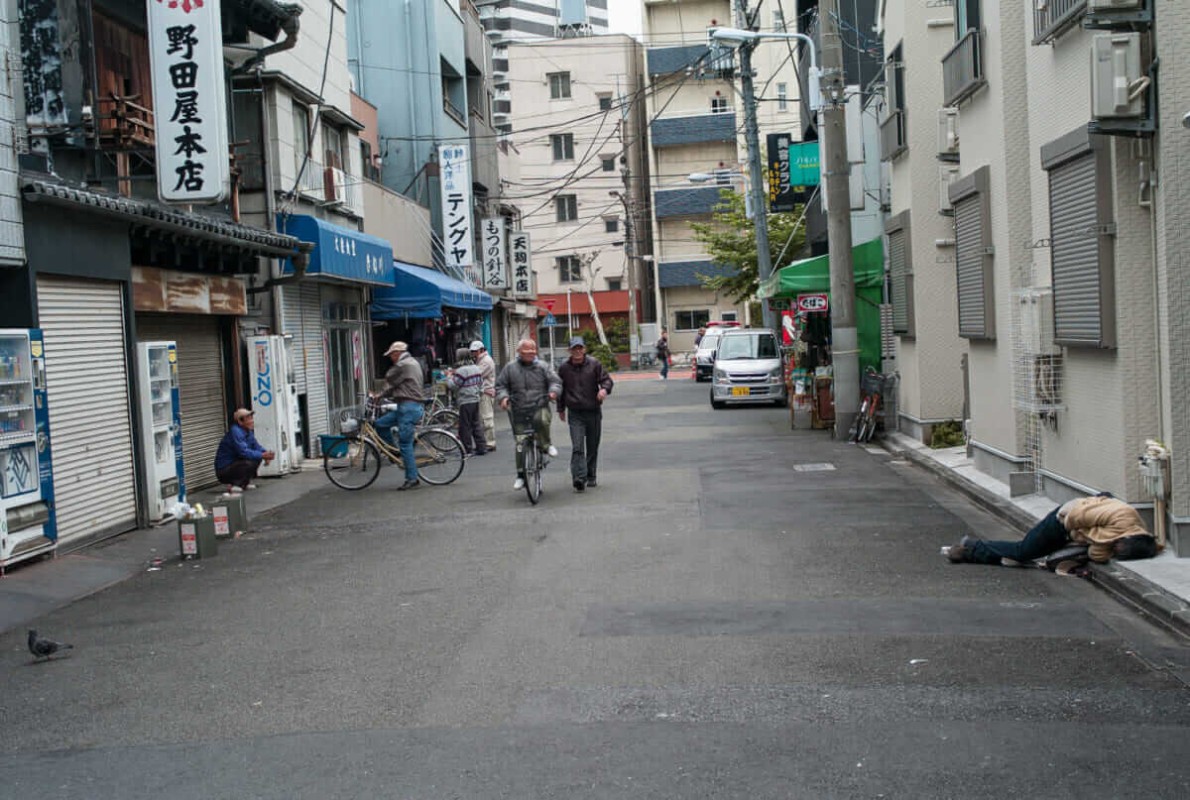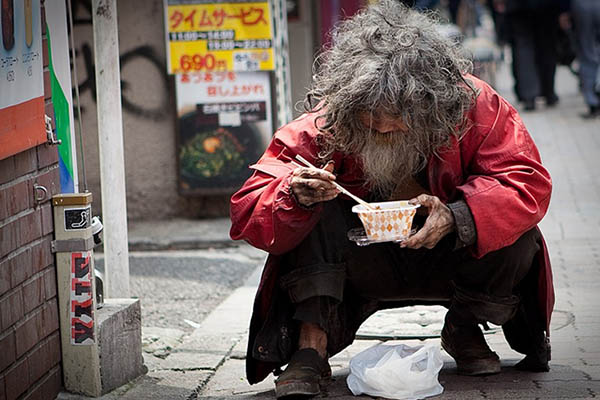The Sanya district, located in the northeastern part of Tokyo, represents a lesser-known and little-explored side of the Japanese capital. Known as the poorest district of Tokyo, Sanya has a history that dates back to social exclusion and the manual labor of the "burakumin," a historically marginalized class in Japan.
Today, the neighborhood is home to a population made up of temporary workers, homeless people, and low-income elderly, challenging the image of a modern, technological, and economically prosperous Tokyo. In this article, we will explore the history, current living conditions, and social issues surrounding Sanya, offering a comprehensive view of a Japan often invisible to tourists and society in general.
We also recommend reading: The Invisible Homeless People in Japan
Table of Content
The Story of Sanya: Exclusion and Marginalization
The name "Sanya" was officially removed from the maps of Tokyo in 1966, as part of a policy of invisibilization of poverty and social problems. During the post-war period, the neighborhood became a meeting point for temporary workers and day laborers who participated in the reconstruction of Japan, erecting landmarks such as the Tokyo Tower and the facilities for the 1964 Olympics. These men, responsible for the physical reconstruction of Tokyo, were relegated to areas like Sanya, where they lived in simple accommodations known as “doya,” which offered tiny rooms at low prices. This historical past of exclusion and hard work shaped the neighborhood, creating a marginalized community within one of the richest cities in the world.
Moreover, the workers who built modern Japan became, over time, helpless and without social support, surviving on small pensions and without family structure. As the years went by, the neighborhood was forgotten by the government, which stopped investing in infrastructure and assistance programs for its residents, further increasing the social and economic isolation of Sanya.
Living Conditions in Sanya: Reality and Daily Challenges
Sanya is made up of small accommodations, where the daily rates can cost less than 2,000 yen (about $10), something unthinkable in any other part of Tokyo. These accommodations offer rooms of just a few square meters, and the residents face precarious living conditions, with a lack of hygiene and often deteriorated infrastructure. Many of the residents are older men, who live on minimal government benefits, supplementing their expenses with temporary jobs or odd jobs, when they can find them. The situation of poverty and exclusion is exacerbated by the presence of garbage in the streets and the absence of any luxury or common comfort found in other regions of Tokyo.
The few social services available in Sanya are mainly supported by NGOs and volunteers who provide food and clothing to residents. In local parks, it is common to see groups of men playing shogi (a traditional Japanese board game) while drinking beer. This routine of inactivity and alcohol consumption reflects the lack of opportunities and the resignation of a population that has lived for decades under adverse conditions, with little expectation of change.

Attracting Alternative Tourists: A Neighborhood of Contrasts
Although it is not a conventional tourist area, Sanya has attracted the curiosity of alternative travelers who want to see a different side of Japan. These tourists, mostly backpackers and budget travelers, seek authentic and less idealized experiences of Tokyo. Staying in Sanya is a way to explore a realistic side of the city and interact with the local community, even though the reception is not always warm, as many residents view tourists with suspicion. The presence of hostels that charge very low rates, compared to the rest of Tokyo, has made the neighborhood a point of interest for those who want to save money and explore the capital in a different way.
Despite a growing interest, tourism in Sanya raises questions about gentrification and cultural sensitivity. Many wonder if the foreign presence could affect the authenticity of the neighborhood, which still struggles to preserve its identity and space. For tourists visiting Sanya, it is essential to adopt an attitude of respect and understanding, remembering that this is a place where daily life is marked by the struggle and overcoming of financial difficulties.

Sanya and the Relations with Organized Crime
Sanya also has a complex history of connections with organized crime, having long been an area of influence of the Yakuza, the notorious Japanese mafia. In past decades, the Yakuza had a strong presence in the neighborhood, taking advantage of the residents' vulnerability to recruit labor and control parallel economic activities. Today, although the Yakuza's presence in Sanya has decreased, it is still possible to notice remnants of their influence, especially in the informal support networks that still help some residents survive amid poverty.
This relationship with organized crime, although less visible, still contributes to the social stigma of the neighborhood. For many Japanese, Sanya is a place to be avoided, associated with extreme poverty and a history of violence. This social isolation further complicates the reintegration of the neighborhood into the rest of the city and limits residents' access to job opportunities and improvements in their quality of life.

The Future of Sanya: Preservation or Renewal?
The future of Sanya is uncertain and raises important debates about urbanization, social justice, and the right to the city. Some advocacy groups argue for the preservation of the neighborhood as a historic area, which witnessed an important era of development in Japan. However, real estate pressure and urban renewal interests threaten Sanya's permanence, as many construction companies see the neighborhood as a potential expansion area.
For many residents and activists, the ideal would be for Sanya to receive investments in infrastructure and social assistance, without losing its identity. The neighborhood could be revitalized, while maintaining its accessible character and its role as a refuge for those in greatest need. In a Japan that constantly seeks to advance and modernize, Sanya reminds us that progress must also include those who have been left behind.

Wrapping Up
Sanya, the poorest neighborhood in Tokyo, offers a rare and valuable perspective on the social complexities of one of the largest and most developed metropolises in the world. Amid a city of neon lights and technological advancements, Sanya represents a contrast: a space of struggle, resistance, and exclusion. With an aging population, lacking opportunities, and living in difficult conditions, the neighborhood is a reminder that even the most prosperous societies have their forgotten faces.
When considering the future of Sanya, it is essential that Japanese society and the government find a balance between urban development and social inclusion. Sanya is not just a neighborhood, but a symbol of the need for justice and equity in the distribution of opportunities and quality of life.
